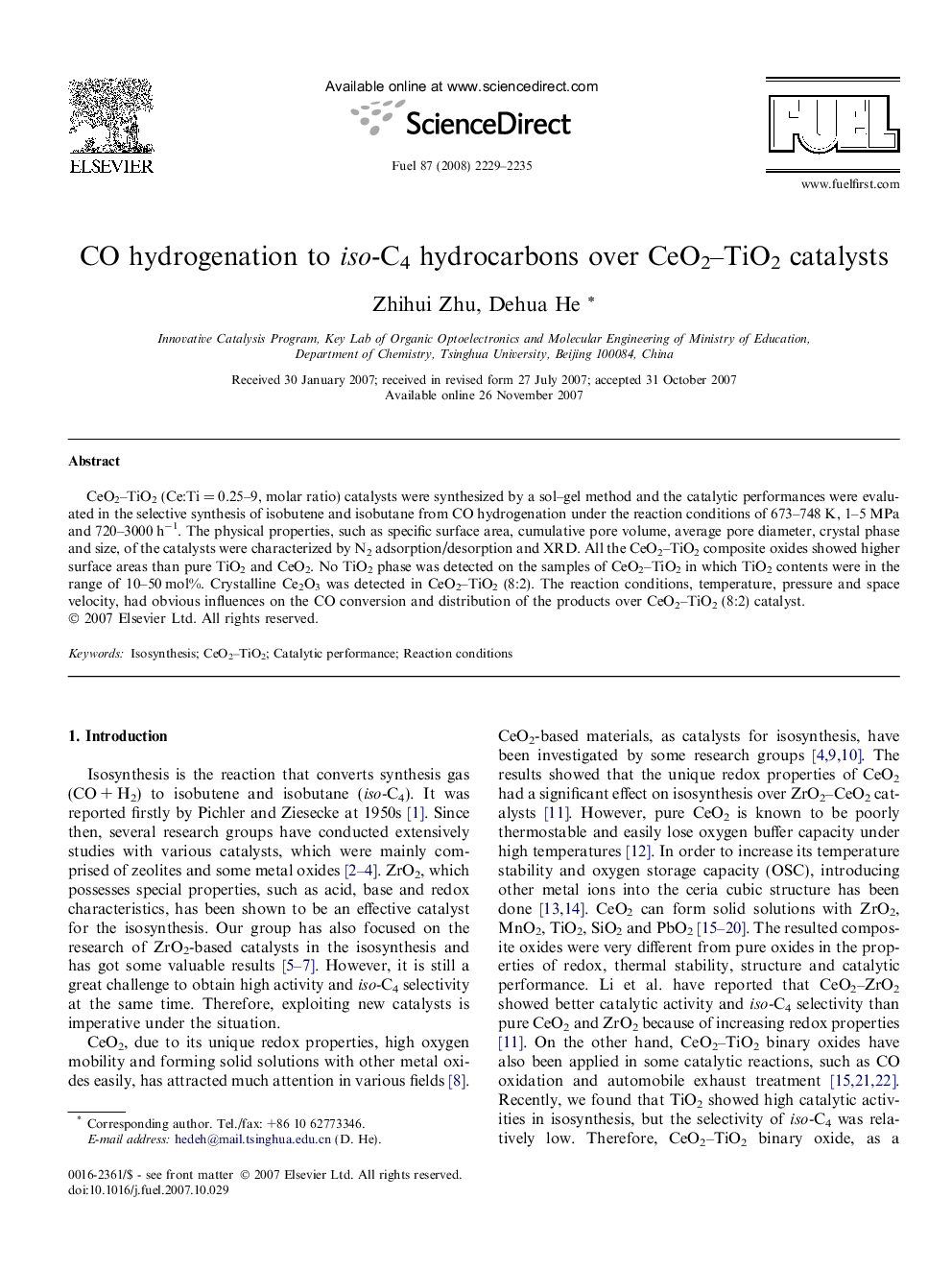| Article ID | Journal | Published Year | Pages | File Type |
|---|---|---|---|---|
| 208396 | Fuel | 2008 | 7 Pages |
CeO2–TiO2 (Ce:Ti = 0.25–9, molar ratio) catalysts were synthesized by a sol–gel method and the catalytic performances were evaluated in the selective synthesis of isobutene and isobutane from CO hydrogenation under the reaction conditions of 673–748 K, 1–5 MPa and 720–3000 h−1. The physical properties, such as specific surface area, cumulative pore volume, average pore diameter, crystal phase and size, of the catalysts were characterized by N2 adsorption/desorption and XRD. All the CeO2–TiO2 composite oxides showed higher surface areas than pure TiO2 and CeO2. No TiO2 phase was detected on the samples of CeO2–TiO2 in which TiO2 contents were in the range of 10–50 mol%. Crystalline Ce2O3 was detected in CeO2–TiO2 (8:2). The reaction conditions, temperature, pressure and space velocity, had obvious influences on the CO conversion and distribution of the products over CeO2–TiO2 (8:2) catalyst.
